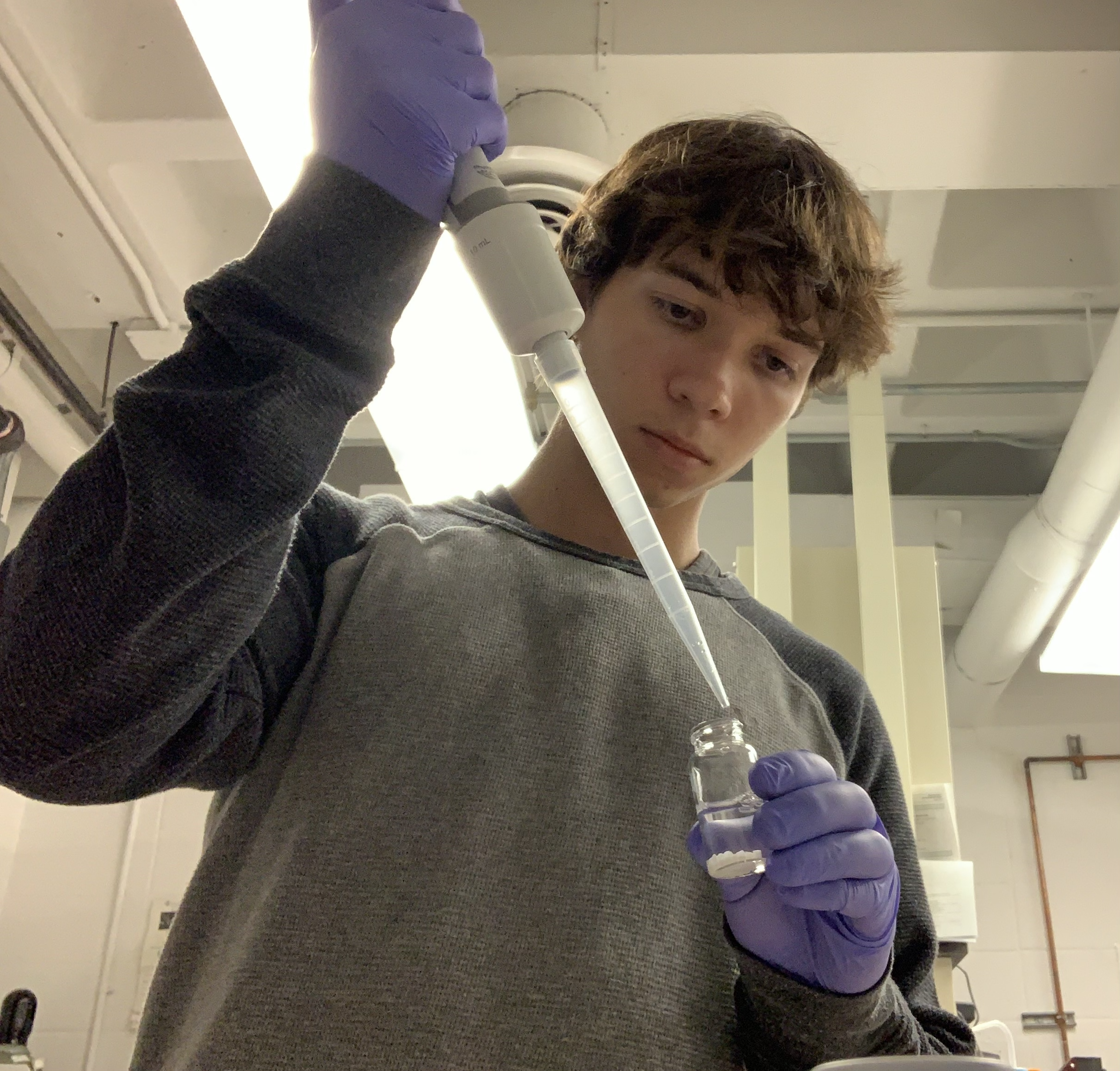Courtesy of Oliver Auciello ’25
This summer, I worked with Columbia University’s Chemical Engineering department to research how different plastics degrade to the micro and nanoscale. Before my research, I was not incredibly familiar with plastics, and I especially did not understand the micro- and nanoplastics I heard about so frequently in the news.
From the Ancient Greek word “plastikos” meaning “fit for molding” and from the Latin “plasticus” meaning “of molding,” our commonly used noun plastic refers to pliable and easily molded materials. Plastics are types of synthetic polymers, which are made up of repeating monomer (small molecule) chains. While there are seven main types of plastic, there are thousands of specific grades of polymers, each of which has its own specific mechanical and chemical properties and synthesis process.
What is the difference between micro and nanoplastics?
The terms “microplastic” and “nanoplastic” have been circulating through the media to describe small fragments of plastic that are either manufactured or break off of larger plastic. Headlines like CNN’s “Bottled water packed with nanoplastics, study finds” and Science News’ “Microplastics are in our bodies. Here’s why we don’t know the health risks” can immediately raise fear and confusion. However, like all trending topics, it is crucial to understand what we know and what we don’t.
Although the sizes micro and nano might seem to fall into the same category of tiny things, when it comes to location, origins, properties and consequences, there are many differences. First, to wrap our heads around the size of nanoplastics, we’ll start with one centimeter (cm) which has 10,000 micrometers. One micrometer (μm) has 1,000 nanometers (nm). So, one centimeter has 10 million nanometers. A human hair is usually 17 to 181 micrometers thick, while one nanometer is about how long our fingernails grow per second (according to the National Nanotechnology Initiative). Nanoplastics usually refer to plastic fragments of lengths between 1 and 100 nm, while microplastics are between 1 and 5,000 μm (1,000 to 5,000,000 nm).
The behavior of plastic at the nanoscale is very different from the micro and macroscale. In water, objects approaching 100 nm and smaller start to act with the random movement of water molecules (Hassan et al., 2015). This random motion continues despite the pull of gravity and therefore a microplastic might sink while its nanoplastic sibling will float (Gigault et al., 2021).
Where do nanoplastics come from?
As we’ve all heard many times before, plastic pollution is a major problem that disrupts and destroys aquatic life. While this understanding led to the 2015 anti-plastic-straws movement to save sea turtles and an increasing number of states implemented bans on plastic bag usage, plastic pollution is an increasingly dire issue.
There has been a substantial amount of research on the contamination of microplastics in the aquatic environment and the health implications that aquatic organisms face. However, due to the entirely different set of properties governing nanoplastics and their detectability, a new category of research with many new challenges is required to understand their effects fully.
Nanoplastics in the environment can come directly from manufactured sources, including nanomedicine and nanoimaging, or fragments of disintegrating plastics. Some examples include tire wear, laundry wastewater, plastic waste, plastic water bottles, and personal care products (such as exfoliants in face washes).
Because nanoplastics are so small, it is hard for the wastewater system to filter them out. Unfortunately, this means that when we use products that contain nanoplastics, they may trickle through the filtration system and end up in oceans, rivers and even freshwater sources.
Impacts on Human Health
There are three possible entryways for micro and nanoplastics to enter our bodies: the lungs, skin, and gastrointestinal (GI) tract. Once inside our bodies, micro and nanoplastics can cause immune dysfunction, alter metabolism and have the potential to cause cancer. However, more research needs to be conducted to accurately determine how the types of plastic and environmentally realistic concentrations affect our health.
As micro and nanoplastics are consumed by aquatic organisms, they are carried up the food chain. Luckily for us, microplastics stay mostly contained in the GI tract of seafood, which is removed during the gutting process. Not so luckily, nanoplastics are small enough to seep into the underlying intestinal tissue of the organism and are likely to remain in the parts we consume.
The actual behavior of nanoplastics inside our bodies is very complex and dependent on many factors, though we know one thing for sure: the size of the plastic particle matters. As biological and chemical research continues to uncover the consequences of nanoplastics, it will likely be far too late to reverse the effects that nanoplastics have on our environment and our bodies.
As of now, there are large knowledge gaps on the ways nanoplastics enter and interact with the environment. Because of this, a lot of the research done on the impacts of nanoplastics on human health use environmentally irrelevant nanoplastic samples, such as types, shapes and concentrations that are not yet found in nature. For now, there is not enough research to explain what exactly is happening inside our bodies, so direct conclusions cannot be drawn.
What We Can Do
As part of the larger plastic issue, it is necessary to limit all daily plastic usage, particularly single use items, as Davis and Nguyan state in “The plastic problem isn’t your fault, but you can be part of the solution.” We can also look into the personal care products we buy and make an extra effort to support brands that take this environmental issue into account. As we learn more about the environmental and human impacts of nanoplastics, we will be better prepared to deal with their consequences.









